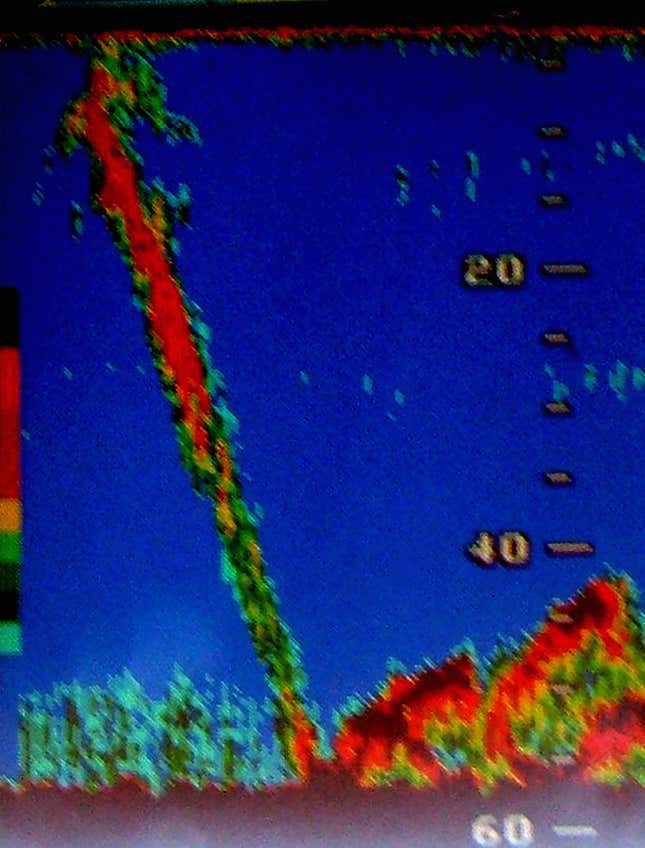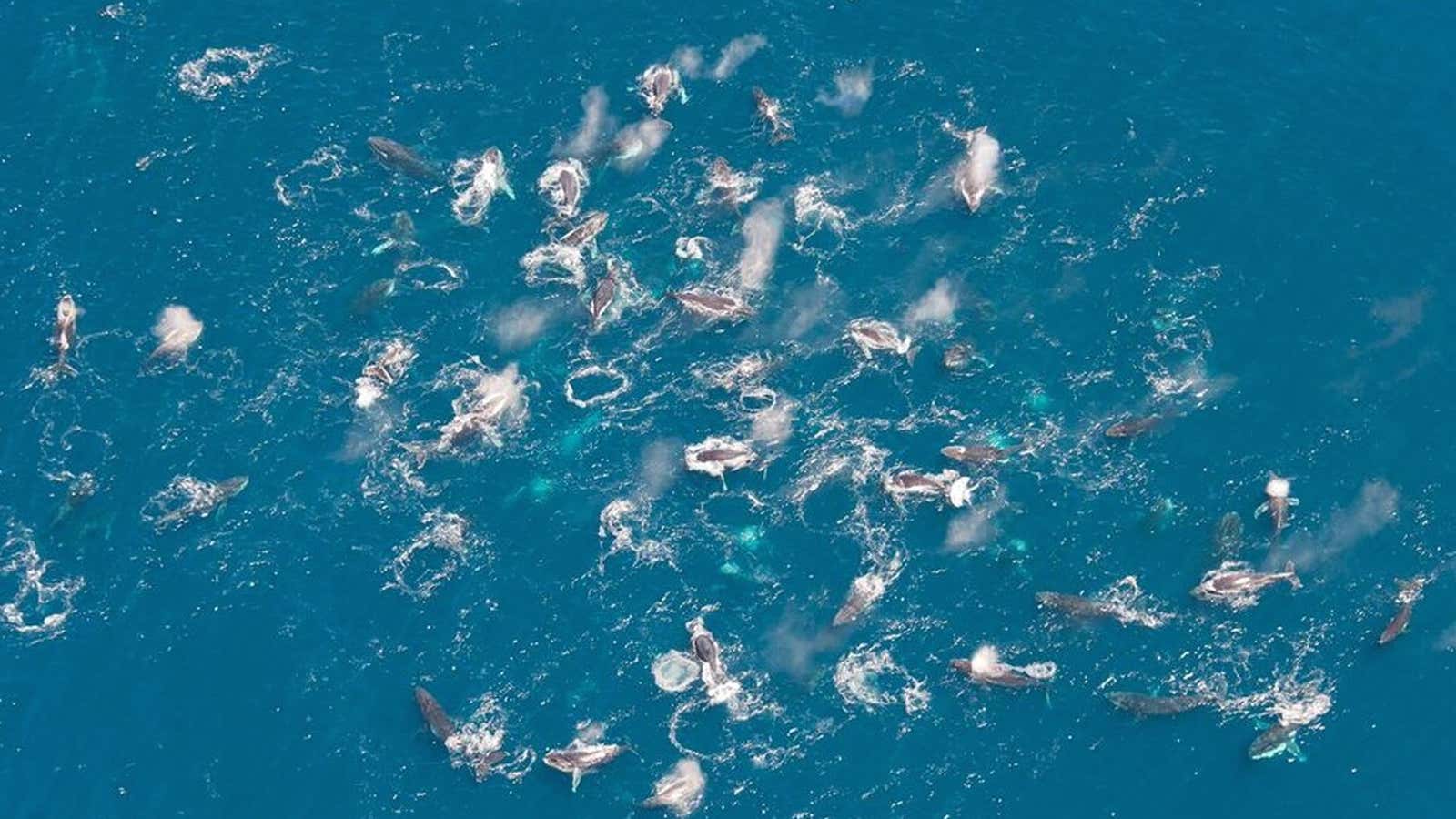For years scientists considered humpback whales to be some of nature’s biggest loners. That is, until observers started spotting throngs of these creatures hanging out in supergroups and feeding frantically en masse. It turns out that humpback whales, like humans, enjoy eating at parties.
A study published in Plos One on March 1 reports the discovery of supergroups in the waters of the Southern Hemisphere, and explains that these humpback gatherings are a “novel and intense” kind of feeding frenzy never before seen.
Humpbacks typically summer in the polar regions of the Antarctic, eating enough krill to keep them fat through the winter—mostly dining alone. They then migrate thousands of miles to tropical waters for the winter. But on three expeditions between 2004 and 2015, humpbacks were spotted in large clusters, feeding together off the southwestern coast of South Africa, thousands of miles from their traditional cold water feeding range.
Ken Findlay of the Mammal Research Institute of Cape Peninsula University of Technology in South Africa led the study reporting on all three research expeditions. ”I’ve never seen anything like this,” he told the New Scientist.
Findlay estimates that the humpback clusters they’ve been seeing are made up of anywhere from 20 to 200 whales—and possibly more. The numbers are based on pooling guesses from professional observers, however, and aren’t precise. Humpbacks are 40 to 50 feet long and their clusters are intense—active and thick, with whales moving around quickly right near each other—so scientists can’t get close. As for aerial photos, those don’t show all the whales who might be diving in and around a supergroup at any time.

The scientists say that the supergroup feeding behavior is of particular interest in light of rapidly recovering humpback populations on the east and west coasts of southern Africa. Whales were once hunted to near extinction, but populations have been rising in the last half century since whaling has been restricted. The new group-feeding behavior and location seems to be based on the fact that there are more whales swimming around the Southern Hemisphere now.
A rising population could change prey availability, either in the waters off South Africa where the supergroups were spotted or elsewhere. The whales could be responding to that pressure, although researchers are only theorizing and don’t pretend to know at this point why that might result in clustering.
Or, it may just be that researchers didn’t realize that humpbacks are social. Perhaps, the researchers posit, the behavior is not new, just the conditions. “It’s possible that the behavior was occurring but just not where it was visible,” Findlay told the New Scientist. “Because there were so few of them, we may not have seen it.”




